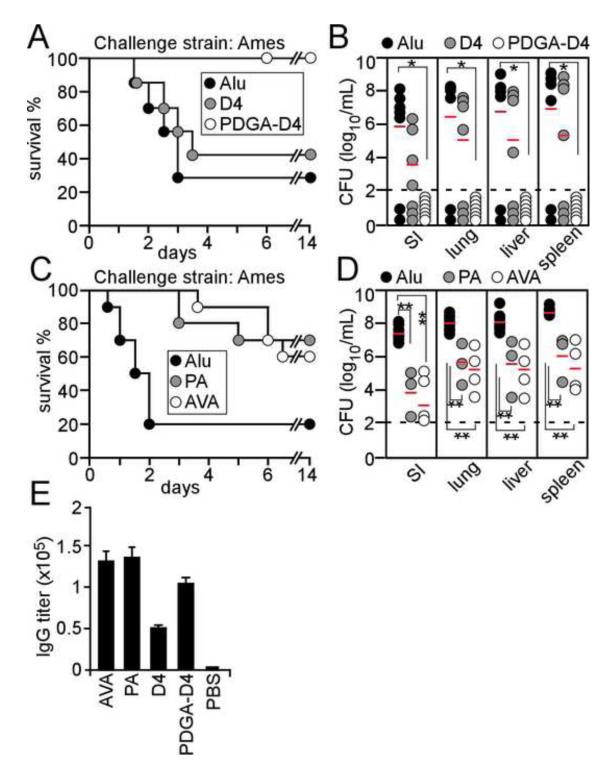Fig. 2.
PDGA-D4 protects guinea pigs from challenge with wild-type B. anthracis Ames spores. (A) Guinea pigs (n=7) were immunized with a prime-two booster schedule with either PDGA-D4 or D4 alone adsorbed to Alhydrogel adjuvant (aluminum hydroxide) or with adjuvant alone (Alu). Animals were challenged by subcutaneous inoculation with 1.6×103 B. anthracis Ames spores and monitored over 14 days for disease and survival. (B) B. anthracis replication in guinea pigs infected as described in (A) at either the site of infection (SI) or in lung, liver and spleen tissues. Bacterial load was determined by plating homogenized tissues on agar and enumerating colony formation. (C) Guinea pigs (n=10) were immunized with anthrax vaccine adsorbed (AVA, BioThrax®), protective antigen (PA) adsorbed to Alhydrogel or Alhydrogel adjuvant alone (Alu) using the same schedule and challenge as in (A). (D) B. anthracis replication in guinea pigs infected as described in (C). The Log-rank test was used to determine significance in animal survival (A and C): PDGA-D4 vs. Alu, P<0.01; AVA vs. Alu, P<0.01; PA vs. Alu, P<0.01. The two-tailed unpaired student’s t-test was used to analyze differences in B. anthracis load in guinea pig tissues of vaccine cohorts compared with adjuvant control (Alu): *P<0.01,**P<0.001. (E) Guinea pigs (n=10) were immunized with a prime-two-booster schedule in 14 day intervals using either AVA, PA, D4 or PDGA-D4 adsorbed to Alhydrogel or a mock (PBS/Alhydrogel) control. PA-specific serum IgG titers of animals were analyzed on day 36 of the immunization schedule. All animal data are representative of two independent determinations.

